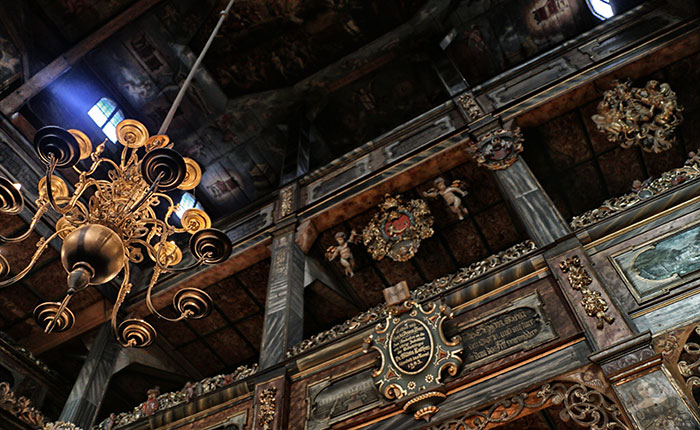Ever heard of Wroclaw?
It's one of those places which people are just starting to discover, tucked away in the south west corner of Poland.
So, what’s it like? My weekend break in Wroclaw was genuinely full of surprises.

It's Poland's 4th biggest city. I expected a drab industrial cityscape. I found a romantic old town with an ornate medieval Town Hall, pastel-coloured gabled houses, a tinkling fountain and narrow cobbled streets. And a bearded lady in bright green stilettos.
She (he?) almost went flat on her face as she tripped across the cobbles. Apparently she's a bit of a local celebrity with her own You Tube channel.
And then there were the dwarves. Hundreds of the little fellas. Bronze statues at knee height playing instruments, cooking, reading and err, pole dancing. Up to mischief, they kept almost tripping me up (and no I wasn't wearing stilettoes).

The big daddy – dwarf number one - stands on the tip of a large bronze finger outside a funky new cafe called Barbara. It's a hub for the more alternative Capital of Culture events taking place next year – micro-projects involving locals painting, photographing, dancing and more. We ate herby Polish pasta called Peirogi and sipped cappuccinos as Arleta our guide explained that the café was formerly where intellectuals and poets cooked up campaigns of dissent against the authorities when Poland was under communist control. The dwarf was a symbol of rebellion. They stencilled him on communist propaganda posters – a bit of cheeky graffiti – two fingers to the establishment.
The dwarves dotted all over town take their inspiration from this. There's even an official form you fill in to request a dwarf for your business. And an official 'dwarf lady' who creates them.
She's been busy for the 2016 celebrations. I found a whole orchestra of dwarves tooting trumpets and clashing cymbals outside the spanking new National Forum of Music. It will host jazz, classical and pop concerts in its acousticly perfect auditoria throughout next year. It’s a world class venue of which the locals are rightly proud.
Another (pleasant) surprise. Poland is cheap. It's not in the Eurozone. With nearly six Polish Zloty to the pound, a pint comes in at around £1.50. The perfect place to sup local brews is Spiz, a micro-brewery in a cellar bar under the Town Hall. I sat surrounded by locals quaffing smoky dark lager served cold from shiny copper pumps in the dimly light, buzzing bar. I ate at a traditional Polish restaurant on the square, Karczma Lwowska. The food was hearty stuff – dark purple borscht soup with stuffed pasta bobbing about in it, pork steak in plum and horseradish sauce and local potato dumplings called kluski. Prefect grub for a chilly autumn eve and big portions at, err, dwarf-sized prices. The whole lot was about £12.

Here's another one I didn't see coming. Next day we took a trip into the countryside to discover an old wooden church at Swidnica. It's a 40-minute drive or about an hour by train. Outside the church looks plain – simple wooden beams and white plaster. But inside, wow! A phantasmagorical feast of swirling cherubs, brightly painted ceilings and delicately carved columns. And - get this – all of it in wood. Not a single nail is used in its construction.

And then there was the fairytale castle with a gruesome secret. Ksiaz Castle, 15 minutes' drive away, sits atop a vast lump of granite. We trooped around historic rooms with vast fireplaces and portraits of hairy aristocrats on the wall. We were lulled into a false sense of security.
A hidden door in a corridor suddenly revealed a 50-metre deep concrete lift shaft down into the rock below. This was a Nazi command centre in WW2. Many of the rooms we'd just seen were to be living accommodation for Hitler himself. This hidden elevator was an escape route should the castle be taken. We explored some of the tunnels under the castle that the shaft leads to. The Nazis built them using slave labour. Sinister and spooky, the place feels like a villain's lair from a James Bond movie. Recent rumours about other tunnels in surrounding hillsides that hide a Nazi 'gold train' laden with booty stolen during the war have provoked a bit of a gold rush of tourists. You can even buy fake gold bars in the castle souvenir shop!
Next day as I nearly jumped out of my skin coming face-to-snout with a monster crocodile in the new Africarium hall at the zoo in Wroclaw I had to admit I'd been bowled over by this city of surprises.
One thing you can be sure of if you visit this 2016 European Capital of Culture; you won't be bored.
Just keep an eye out for those dwarves.
Fancy a Weekend in Wroclaw?
Get There:
Fly daily to Wroclaw from London Stansted with Ryanair
Stay There:
The 4* Art Hotel is comfortable and ideally located. Typical cost is £60 for a double.
More info:
Check out the websites of The Polish National Tourist Office, The Wroclaw tourist office and the The Lower Silesia Tourist Board for more information.